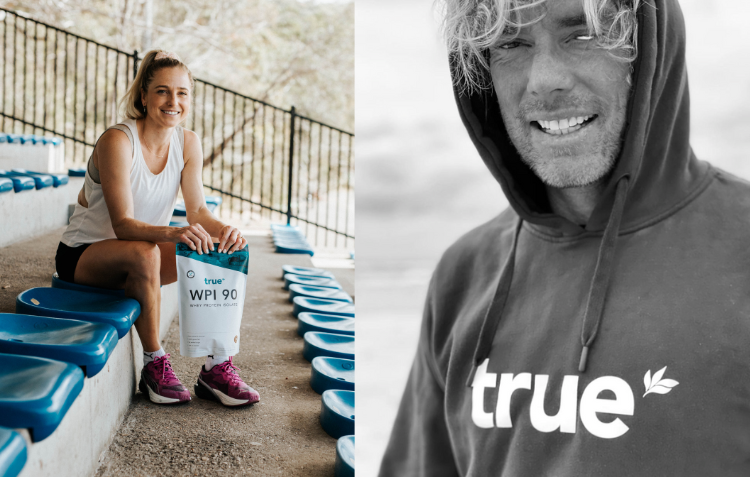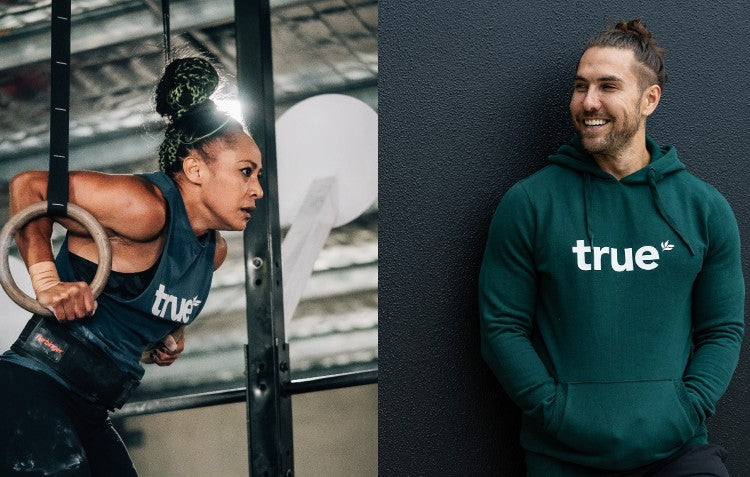Last updated 21st October 2025
1. What does a typical day look like for you?
On a typical hard training day I have an early start so that my sessions aren’t impacted by the heat and humidity we’ve had this summer!
6:30am – Wake up
7:00am - Breakfast
8:00am – Training
10:30am – 11:00am Finish Training
12:00pm – Lunch
1:00pm – 3:00pm Rest and recovery (either just resting at home or physio, massage appointment), errands if I’ve got something I need to do.
4:00pm – Gym
5:30pm – Second Run
7:00pm – Dinner
10:00pm – 10:30pm Bed
2. What time do you typically wake up on a training day?
I haven’t typically been a morning person but have had to adjust my wake up and training times through the Australian summer this year because it has been a warm one. We’ve also relocated to Newcastle and the heat and humidity is a fair bit stronger than I’ve been used to in recent years when I was based in the US or in Wollongong on the south coast. So that the weather doesn’t impact the quality of my sessions, I start my warm up at 8:00am and the harder intervals around 9:00am. I’m up at 6:30am to have time to have some breakfast and a coffee beforehand. If I have something that’s been a bit tight or sore, I might wake up a bit earlier to have time to loosen that up and stretch a bit before I head out to training.
3. Do you follow a specific morning routine or have any pre-training rituals?
The first thing I do when I wake up is make a coffee. I don’t think it’s necessarily for the caffeine in the morning any more, I just enjoy starting my day with a good coffee. If I know it’s a really hard training session ahead, I might take a few minutes to think about how I’m going to mentally break the session down into sections while I’m driving to training. I’m lucky at the moment that my body is pretty healthy so I don’t have to spend too much time getting it primed for training sessions in the morning.
4. How important is nutrition for you in the morning?
Nutrition is really important to me in the morning. I always fuel before training, even if it’s just a short shakeout run. To me, it’s not worth feeling flat or tired on my run if I can prevent that by having breakfast beforehand. I alternate between a couple of different breakfasts that I know sit well in my stomach before training and give me a good balance of carbs, protein and fats to fuel me for the workload I’m about to demand of my body and keep me full through the whole morning. Sometimes after training, I don’t have much of an appetite so I like to go into my session having had a proper breakfast so that it’s not too big of a deal if I can’t stomach a proper meal right after training. I can start by getting my protein shake in and a banana in the recovery window because these go down easily. Then once I’ve got my appetite back have a more substantial meal.
5. Can you describe a typical training session for you? What types of exercises or drills do you focus on during your training?
My training week alternates between recovery days and hard session days. My recovery days are usually two runs, totaling 16-18km for the day. My hard session days are specific sessions focused on the different range of paces I need to cover in my racing distances. For example, a typical track session for a 1500m runner is 400m repeats. I’ll start off with a 5km easy jog warm up, go through a set of mobility and dynamic drills to get my body moving well, do 4-5x100m strides at the pace I’m trying to do my intervals at and then I’m ready to start. Depending on the day and time of the year we are in, I could do anywhere from 8-12x400m at 1500m pace before finishing with a very easy 3km jog to cool down and flush the lactic acid build up out of my legs. When I’m doing intervals at race pace, I’m focused on trying to stay relaxed, drop my shoulders and find the rhythm. If I have a key race coming up, I might try to visualize myself in the race situation staying relaxed and composed and taking it one rep at a time. Later that day I’ll head out for a 6-7km easy run to shake the session out of my legs and be ready to keep training again tomorrow.
6. How do you stay motivated during challenging workouts?
Knowing why I’m doing a particular session or the purpose behind the way the session is structured allows me to stay motivated when it gets challenging. A lot of the time in training I’m trying to replicate the feeling my legs will have in a race. I remind myself what I’m working towards and embrace the discomfort because it is preparing me for that feeling on race day.
7. What does your pre-training meal look like? Are there specific foods or supplements you prioritize?
Before training, I prioritise a balanced breakfast to support my training session. My breakfast is either a Greek yoghurt bowl with a mix of berries, nuts and 3-4 Weet-Bix topped with honey, or toast with peanut butter, banana, honey and some Greek yoghurt on the side. I like to find a good bakery wherever I’m training and buy a nice loaf of sourdough or seeded bread to dress my breakfast up a bit. I always have a big glass of water with True electrolyte. Tropical is my favorite flavor.
A glass of electrolytes in the morning before training was something I learnt when I went on my first altitude training camp in 2019 and I’ve been doing it ever since. Altitude can be a little more dehydrating than a normal night of sleep at sea level, but it’s a part of my routine that also works as great pre training preparation in Australia before big sessions in the summer.
Occasionally I go through stretches of training when my Achilles tendon can be quite tight in the morning, especially if I’ve been spending a lot of time on the track in my spikes. If this is the case, I will also have a scoop of Collagen with Vitamin C in the morning. Collagen can help to strengthen ligaments and tendons which I’ve found can help to relieve some of the pain that comes with tight Achilles. Supplementing with collagen 30-60 minutes before loading the ligament or tendon has been found to be most effective in helping direct the collagen to the parts of the body that most need it. If I’m consistent with collagen supplementing, the awareness in my Achilles is much more manageable.
8. How do you ensure you're meeting your nutritional needs throughout the day?
I’m pretty routine when it comes to my nutrition, especially when I’m in hard training blocks, I find my body craves the nutrients it needs to repair and prepare for the next day of training. I’ve worked with some great nutritionists in the past and have the support of Rebecca Haslam at the NSW Institute of Sport at the moment. I’ve learnt a lot over the years on what works for me fuelling wise. I enjoy cooking so I mix things up so that I’m looking forward to what I’m eating. To me, food is fuel and I can’t do what I love consistently without taking care of my nutrition. Thinking ahead and staying organized with grocery shopping, meal planning and preparation helps to make sure I’m never underfuelled. As a middle distance runner, fuelling is essential to staying healthy and consistent at training. I listen to my body and what it’s craving. Usually if I’m craving something, it’s because my body needs that nutrient or the energy density from that type of food to recover properly.
9. What is your post-training recovery routine like? Do you incorporate any specific recovery techniques, such as ice baths or massages?
Immediately after training I have a scoop of True Protein WPI. If I’m training at a track or a trail, I’ll mix it with water, but if I’m finishing a recovery run back at home, I’ll mix it with milk. I’ve recently started adding 1 teaspoon of True Protein Gut Health to my vanilla WPI and the flavor combination is amazing! Usually I start to crave my Protein shake on my cool down or the last few minutes of my run as my body starts to think about recovering before the next session. I aim to get a proper lunch meal in about an hour after wrapping up my morning training session. At the moment my go to is an omelette with capsicum, onion, spinach, mushroom, tomatoes and cheese with a piece of toast topped with avocado. My omelette combination has come from me aiming to get a lot of different coloured vegetables in to make sure I’m getting a good variety of macronutrients. If I’m pushed for time I’ll just do avocado toast with fried eggs and try to get some fruit and vegetables in with my afternoon snack.
10. Do you have a night-time / wind down routine?
I record the training I did for the day in my training diary and look ahead at what I’ve got on tomorrow. Once I’ve got a good idea of what tomorrow will look like, I will scroll a little bit on social media, read or sometimes just go to bed if it’s been a big day and I’m ready to sleep.
11. How do you mentally prepare for a competition?
I’m always thinking about my next race once I finish up the previous one. I like to think about what I’d like to get out of it, who else is racing, what they might be planning to do and how I can put the best race together that suits my strengths and gives me a good opportunity to be successful. If I’m trying to practice something, I’ll spend some time visualizing myself executing it so it becomes more familiar. If it’s out of my comfort zone, we’ll incorporate it into training a couple of times in the lead up so I get a good idea of what it should look and feel like. I like to be very prepared going into races, knowing I’ve got the tools I need to execute my race plan on the day. I have a couple of training partners who are awesome when it comes to helping me visualize different things in training. I train with a couple of guys for my big sessions – Harry and Fin – and they are metronomic when it comes to hitting splits. I do my key sessions with Harry and Fin and being able to trust them with the pacing allows me to focus on the mental side and put my mind in the race setting and pretend that I’m in the stadium I’m competing in, running in the pack of women I’ll be racing.
12. Do you have any pre-competition rituals or routines?
My race day routine is habitual at this point in my career. I know what I’m doing from the moment I wake up until I cross the finish line. I travel a lot domestically and internationally so my routine is quite simple so that it doesn’t matter where I am in the world, I’ll have access to the same sort of foods I like to eat. 3 hours before my race starts, I have a bowl of porridge with non dairy milk, topped with a banana, honey and peanut butter. 30 minutes before my warm up I have a coffee and maybe another banana if I feel like I need a top up. 60 minutes before our call room time, I start my warm up. Through my warm up I’ll sip on True Protein Fuel. This keeps my carb storage up and honestly is more appetizing than water when the nerves start to rise. If I’m feeling nervous, I’ll take a few moments to focus on a couple of deep breaths and recenter.
13. Are there any specific challenges you face in balancing your schedule?
I’m very lucky to be in the position that running is my job. I think it’s the best job in the world! I get to travel the world and do what I love in some pretty awesome places. In saying that, I prioritize my training every day and anything else has to fit around what I need to do for training and recovery. There are different times of the year (October – early January) when I can be a little more relaxed with my schedule but once we roll into January, racing starts back up and training becomes a lot more specific so I start to be a lot more dialled into my schedule to make sure nothing impacts training. As a distance runner, everything we do through the day can impact the next day of training. It’s important to stay consistent with recovery and nutrition or it catches up with you quickly.
14. What are your long-term goals as a track athlete?
Ultimately, my big goal is to look back on my career one day with no regrets. At the moment I’m focused on the middle distances, but eventually I would like to spend some time focused on the 5km and maybe eventually even longer distances. Looking long term, I would love to be doing this through Brisbane 2032 and competing at a home Olympics.
15. Are there specific milestones or achievements you're aiming for?
This year I’m focused on qualifying and competing at the Paris Olympics. The track and field calendar has a major championships most years so I structure my season with that in mind. I would like to run PB’s in the 800m, 1500m and mile that reflect the level my training has built up to over the last 12 months.
16. What advice do you have for young athletes aspiring to pursue track and field?
You have to love what you do and take ownership of your process. At the end of the day, you have to be prepared to work hard and challenge yourself, if you truly love what you’re doing, you’ll embrace it when things get tough. Don’t place any limits on yourself, you never know what you might be able to do if you give yourself a chance.
Learn more about Jess Hull's Race to Greatness



